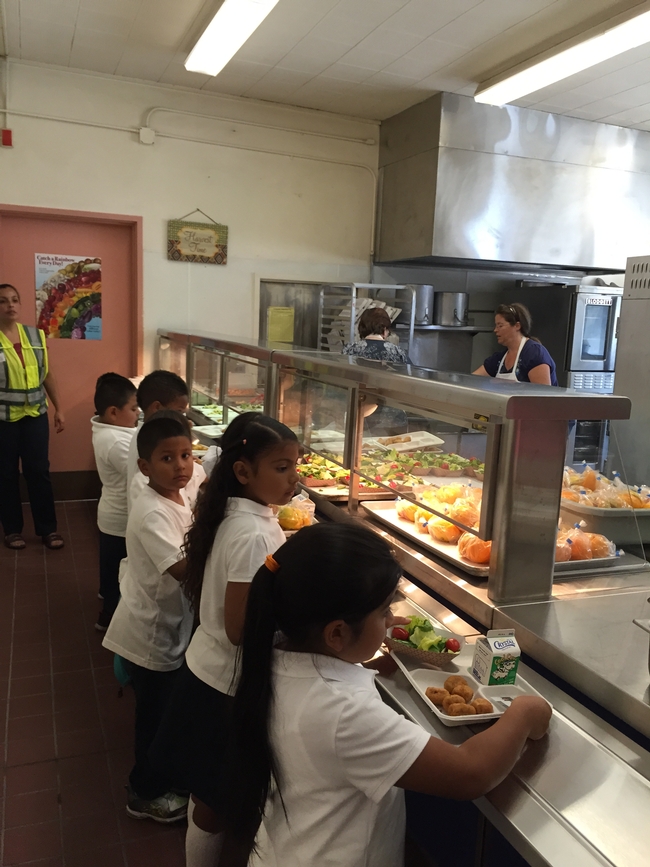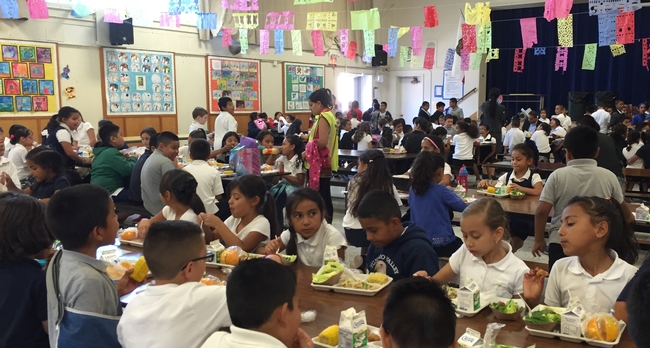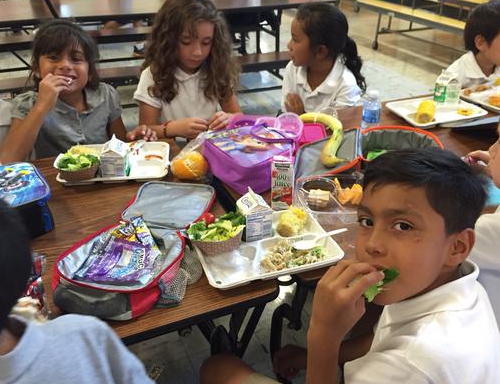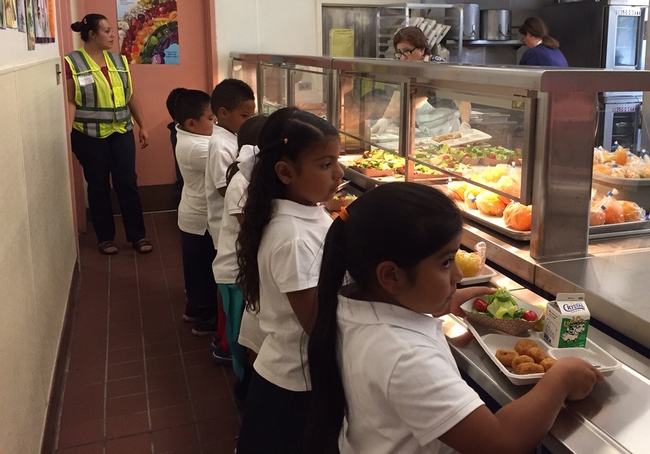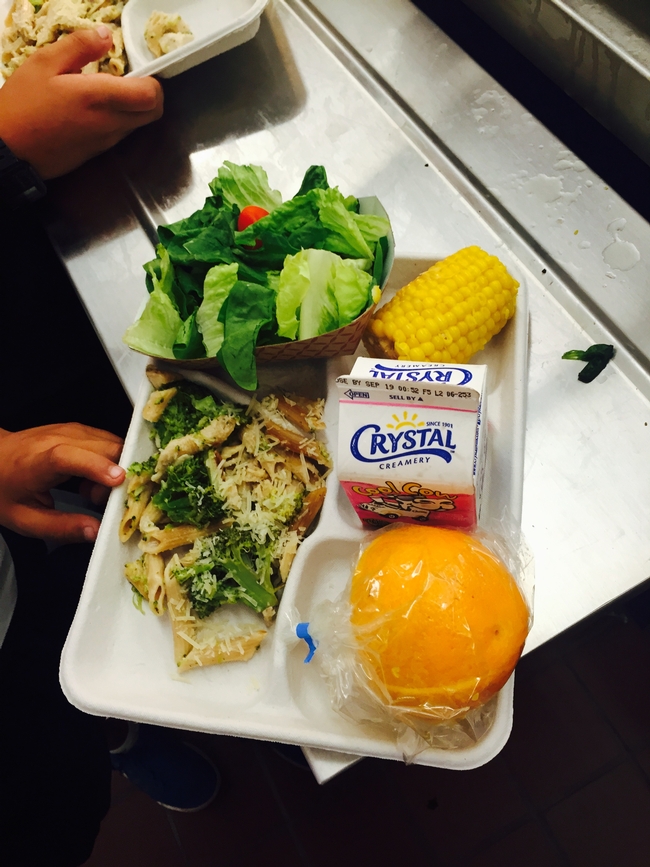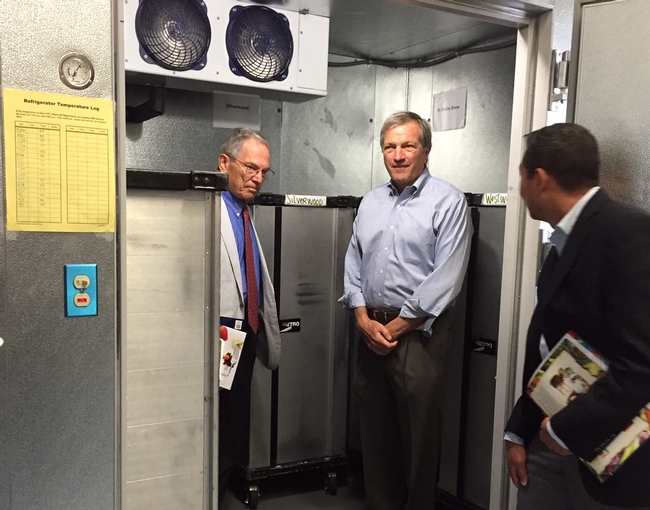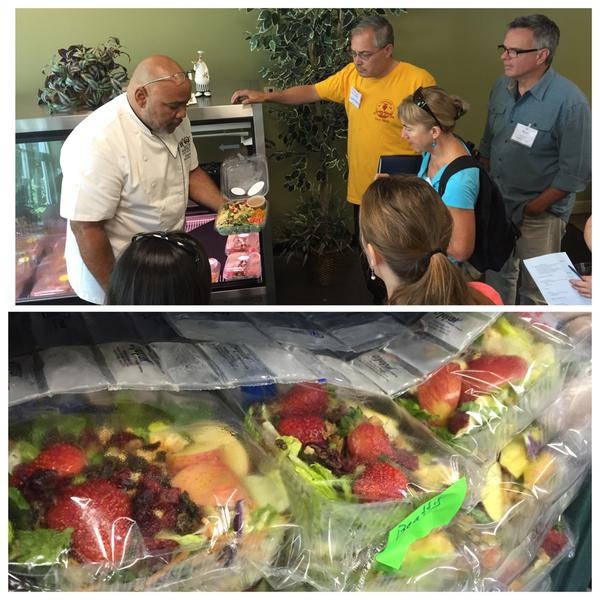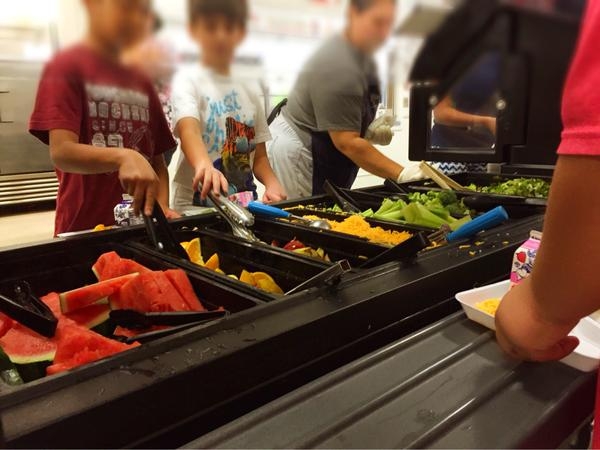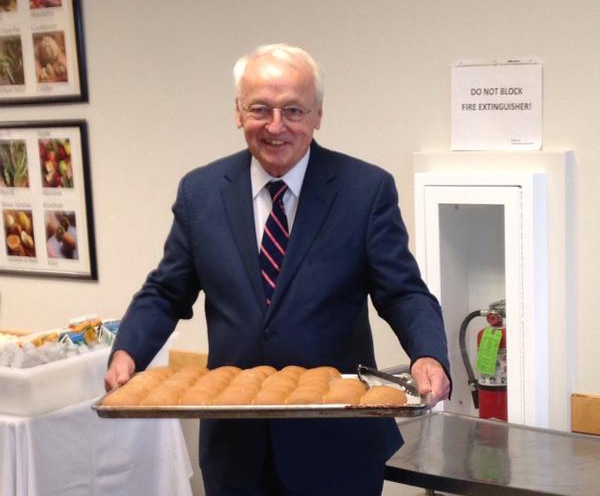Posts Tagged: Kenneth Hecht
USDA school kitchen grants enable kids to make healthy food choices
Thanks to new equipment in school kitchens, made possible by special USDA grants, schools around the country are now serving fresher, healthier and more appealing food to students, according to research by the UC Nutrition Policy Institute (NPI).
"Years of federal neglect have resulted in many poorly equipped school kitchens, making it impossible to serve the nutritious meals that students need, particularly in light of the obesity epidemic that has affected so many youngster," said Kenneth Hecht, NPI coordinator.
During the past six years, Congress provided nearly $200 million to help schools purchase new equipment. Pew Charitable Trusts engaged NPI to see whether the grants enabled schools to make more meals from scratch with locally grown food and lead children to make healthy food choices.
NPI researchers visited 19 schools across the country to see new equipment in action and interview food service professionals, administrators and students. Their report was issued this month by Pew Charitable Trusts.
“Just one new appliance or serving station can have surprising impact on meal programs and students,” Hecht said. “Because of the USDA's School Kitchen Grants, more students are choosing school meals and they are eating more fruits, vegetables and other healthy options.”
The Nutrition Policy Institute, a statewide program that is part of UC Agriculture and Natural Resources, contracted with Pew to take a close look at a sample of representative schools that received the USDA kitchen equipment grants. The 19 schools – in the states of Kansas, Kentucky, California, Pennsylvania, Hawaii, North Dakota and Maine – were chosen to represent a range of sizes, grade levels and community types (urban, suburban and rural).
One of the schools in the study was Ygnacio Valley Elementary School in Concord, where the worn and dimly lit serving line made meals look lackluster. With the USDA grant, the school purchased a new serving counter with heated and refrigerated serving wells to keep dishes at proper temperatures, a salad bar and under-counter lighting that draws attention to colorful produce and other healthy fare.
“Children are taking and eating more fruits and vegetables because they can actually see how beautiful the food is and get to it easily,” says Megan Webb, the school's food service manager.
Another California school involved in the research, Robertson Intermediate School in Daly City, used the grant funds to purchase a large, three-door refrigerator and a warming oven. The upgrades helped the school increase the number and appeal of its entrée options and made it possible to contract with a different meal vendor for the 2015-16 school year.
“We absolutely needed new equipment; what we had barely functioned,” said Audra Pittman, superintendent of the Bayshore Elementary School District.
“The food is really good,” said one student cafeteria helper. “It's much better than last year.”
Farm to fingers: Schools provide fresh fruits and vegetables for children’s meals
Several grade school students set down their forks to eat their green salad, picking up individual lettuce leaves with their fingers and pushing them into their mouths. Not that I was there to judge for style, it was just an observation as I looked around the cafeteria festooned in colorful hand-cut paper banners to see how many of the kids had taken a salad.
The youngsters are required to take at least a half-cup serving of fresh fruits or vegetables as part of a healthful meal to meet national nutrition standards, but I noticed they were voluntarily eating the fresh leafy greens and orange slices.
The children had selected the food themselves from a new serving line, which was made possible by a grant from the USDA aimed at encouraging children to eat healthier school lunches. U.S. Department of Agriculture has been providing a new round of grants since 2013 to upgrade kitchen and cafeteria equipment. Ygnacio Valley Elementary School is in Mount Diablo Unified School District, which received a USDA grant.
About one-third of children in California are overweight or obese, which is associated with serious health risks.
According to The Pew Charitable Trusts, 93 percent of school districts in California, and 88 percent nationwide, need at least one piece of equipment to better serve students nutritious foods.
Kenneth Hecht, director of policy for the Nutrition Policy Institute organized the Sept. 3 visit to the Mount Diablo Unified School District for Congressman Mark DeSaulnier and USDA executives to see the improvements.
The school district serves about 20,000 meals each day, nearly half of which (46.2 percent) are free or reduced price for children from low-income families. By replacing a refrigerator bought in 1973 with a new walk-in refrigerator, the central kitchen is able to store and serve twice as much fresh produce while saving energy and energy costs, said Anna Fisher, director of Food and Nutrition Services for Mount Diablo Unified.
The new serving line allows for food to be displayed so the children can select their own food, whereas before, each tray was filled by a server and handed to the students.
“We've seen that when the children select their own food, less food gets thrown away,” said Fisher.
“The examples we are seeing at Mount Diablo Unified School District are perfect illustrations of what these USDA grants can do, from the procurement of food to serving healthy meals to children,” said Hecht.
Congressman DeSaulnier, who ate lunch with the students, is sponsoring the School Food Modernization Act (HR 3316) to continue and strengthen the USDA grants program.
Another piece of federal legislation aimed at improving child nutrition is the Healthy, Hunger-Free Kids Act of 2010, which includes farm to school support and expires on Sept. 30, 2015.
“This fall is a pivotal time for the future of Farm to School programs across the country,” said Gail Feenstra, deputy director of the UC Sustainable Agriculture Research and Education Program (SAREP) in the UC Division of Agriculture and Natural Resources.
On Sept. 2, SAREP and the Urban Environmental Policy Institute at Occidental College hosted a tour of farm-to-school sites in the Riverside Unified School District where Los Angeles-area participants were able to meet with farmers, school chefs, food service directors, advocates, researchers and elementary students and to witness firsthand the benefits and challenges of providing farm-fresh fruits and vegetables to Southern California schoolchildren.
Riverside schools have transitioned from heating prepackaged meals to buying local produce and preparing fresh food on-site.
According to Kirsten Roloson, director of Nutrition Services, and Adleit Asi, operations manager, Riverside Unified now buys $400,000 worth of produce from local farmers. One farmer, Bob Knight, who supplies oranges and other produce to Riverside Unified, said he's making five to seven times more money selling to schools than he did before.
“Farm-to-school programs increase access to fresh, healthy produce among school children while also supporting local farms,” said Feenstra. In California, she noted that 2,626 schools participate in farm-to-school programs, serving 1.8 million students and buying more than $51 million in produce from local California farmers.
Feenstra will be leading a similar farm-to-school tour for policymakers in Sacramento on Sept. 29.
"With new equipment and fresh produce, schools can prepare healthy and more appealing school meals that may be the most nutritious meal a child receives that day," Hecht said.
Whether children eat with forks or fingers, the nutritional quality of the food they eat can affect their lives, long term.
The University of California Global Food Initiative aims to put the world on a path to sustainably and nutritiously feed itself. By building on existing efforts and creating new collaborations among UC's 10 campuses, affiliated national laboratories and the Division of Agriculture and Natural Resources, the initiative will develop and export solutions for food security, health and sustainability throughout California, the United States and the world.
Congressman eats a healthy lunch with first-graders
Kids are eating better in Contra Costa County schools and it improves their long term health, said Congressman Mark DeSaulnier in an interview broadcast by KTVU News in San Francisco. The congressman was at Ygnacio Valley Elementary School to eat a healthy lunch with students yesterday.
The school received a USDA grant to purchase new kitchen equipment. The UC Division of Agriculture and Natural Resources Nutrition Policy Institute (NPI) has a contract with Pew Charitable Trusts to do case studies of selected schools around California and the nation to show the benefits of the USDA grant program, and to promote its continuation in Congress for future years.
"Many schools are making do with obsolete equipment that cannot readily meet the new, tougher federal meal standards," said Kenneth Hecht, NPI director of policy. "With new equipment, schools can prepare healthier, fresher, more appealing meals that are often the best meal kids get all day."
In the media report, DeSaulnier walked through the new serving line with Ygnacio first-graders and sat down to enjoy a healthy lunch with them. According to KTVU news, the congressman said he has heard a lot of arguments in Washington, DC, against changing food in schools, but he believes it makes a long term difference for children.
New school meals provision gives kids more access to healthy food
“This initiative reduces hunger among children in high-poverty areas, and ensures students have access to the healthy food they need to succeed in school,” USDA Under Secretary Kevin Concannon said during Tuesday's visit to Edison Computech Middle School in Fresno.
“About 20 percent of U.S. households with children were food insecure at some time in 2013 – meaning they had trouble affording enough food to eat,” said Lorrene Ritchie, director of UC Nutrition Policy Institute.
The new provision allows school districts to serve all of their students at no charge to the students, reducing the districts' paperwork for the school meal program. It also removes the stigma that deterred some students from accepting the needed nourishment.
“One of the largest and most accessible means to reduce food insecurity in children and improve their diet is the federal school lunch and breakfast programs,” said Ritchie. “Research has shown that school meals are healthier than most meals that students get elsewhere. For these reasons, we are highly supportive of the Community Eligibility Provision, which makes it easier for the kids who need it the most to have access to healthy meals at school.”
“It is wonderful to see that Fresno Unified School District has jumped on the brand new opportunity that the Community Eligibility Provision offers to bring nutritious meals and snacks to all of its students without charge,” Kenneth Hecht, director of policy for the UC Nutrition Policy Institute.
“More than four out of five families of Fresno Unified School District's 75,000 students have such low-incomes that they qualify for free or reduced-price meals,” Hecht said. “Many students' families are not English-language households, and the school district has been struggling — effectively — to improve its dropout and graduation rates. Free school meals are a major element in the district's successful effort to improve student success: nutritious free meals bring children to school, contribute to their health and academic performance and let families spend the money they save when their children can eat at school to improve the nutrition quality of the meals that are prepared at home.”
In addition to being able to serve more students, Fresno Unified School District's seven-year-old, state-of-the-art kitchen enables school chefs to prepare all meals and snacks within the district, according to Hecht. “This means food can be freshly prepared, without relying on preprocessed foods that often include fats, sugars and other unhealthy additives that contribute to childhood obesity,” he said, adding, “Children in Fresno County experience a more than 40 percent rate of overweight and obesity.”
“Not surprisingly food insecurity can result in lower diet quality,” said Ritchie. “For example, in a new study to be published in the Journal of Nutrition, we found that higher levels of food insecurity among children was related to increased consumption of energy, fat and sugar, and a lower intake of vegetables. Food insecurity can also have negative behavioral and cognitive effects.”
During Concannon's visit to Computech, members of the UC CalFresh nutrition education team met and got a photo of the USDA under secretary touring the kitchen.
“We were present due to UC CalFresh's close partnership with the district,” said Shelby MacNab, UC Cooperative Extension nutrition program manager in Fresno County. “We teach nutrition and are leading the Smarter Lunchrooms movement (SLM). Computech was our pilot site and the district was thrilled with the outcome. The undersecretary said SLM was music to his ears.”

